#animerama if you will....
Text
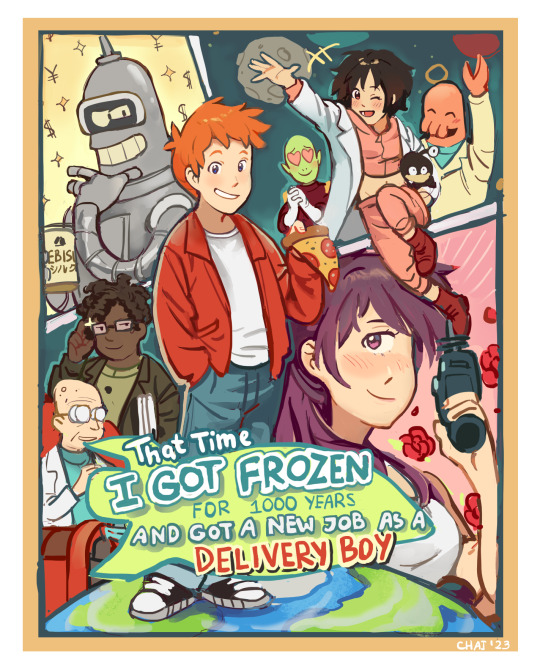
okay so we all agree that futurama is an isekai but what about an overly long and dumb title?
(clean version under the cut)

this is gonna be my legacy... i tried being faithful to the Typical Anime Style but got carried away lol
#futurama#animerama if you will....#i hate doing high quality shitposts lmao#philip j fry#turanga leela#bender bending rodriguez#bender#hermes conrad#amy wong#zoidberg#kif kroker#hubert farnsworth#damn thats a lot of tags
24K notes
·
View notes
Text
Animation Night 146: Leiji Matsumoto
Tragically there is a death in the news this week: Leiji Matsumoto, renowned creator of Space Battleship Yamato, Captain Harlock, and Galaxy Express 999. I’d like to commemorate him with an Animation Night...

It would be hard to think of a scifi mangaka or anime director more influential than Matsumoto beyond, well, Osamu Tezuka himself. Sure, Tomino, Anno, Rintaro - but who were they influenced by? Space Battleship Yamato is the bridge from goofy monster-of-the-week super robots to the dramatic anime that would eventually develop in the 80s onwards. So let’s start there.
As recounted in some detail here, Leiji Matsumoto grew up during the second world war; he struggled to find much of an audience for many years until his Senjō WWII manga started to become popular in 1971. This led, in turn, to Matsumoto joining the Space Battleship Yamato project in 1973 alongside producer Yoshinobu Nishizaki, and Eiichi Yamamoto of (no seriously) the ‘Animerama’ trilogy of erotic films, notably Belladonna of Sadness.
When Matsumoto joined the project, the plan was for it to be a dark ‘Lord of the Flies in space’ space drama. Matsumoto was at this time a WWII mangaka, so with WWII on the brain, it’s not entirely surprising that he drew most of his ideas from the war. It was his idea to design the spaceship after the actual battleship Yamato, a major symbol of Imperial Japan that in fact did very little before she was sunk in 1945.

Space Battleship Yamato shows a spaceship built in the ruined shell of the battleship, sailing around in space to fight against an alien invasion. It is armed with a superweapon called the ‘Wave Motion Cannon’ (波動砲 hadōhō), which became a standard term for a huge scifi laser weapon. Matsumoto planned to pattern events in the series after real battles in the world war. But the production was cut down, from 52 episodes to 26, and the story simplified, losing a lot of the antagonist’s motivation. Even so, it was a lot more complex than TV anime at the time was used to, a first step on the path to the complex, dark sci-fi anime and manga of the 80s and 90s.
The TV series struggled for ratings until the release of a compilation film in 1977, which kicked off a surge of ‘Yamato fever’. Its character archetypes, like the gruff paternal bridge captain, became stock characters. And while for most part the animation in the series was limited, it was an opportunity for Kazuhide Tomonoga to create some landmark mechanical animation of the sinking of the original Yamato.
Yamato was among the earliest wave of anime to be released outside of Japan. It gaining a following in Europe, and in America it was retitled and edited as Star Blazers. Contemporary critics dismissed it as a poorly animated knockoff of Star Wars, yet it continued to snowball in popularity. You might spot nods to it in various places; Miyazaki put a wrecked Yamato in Nausicaa as a gesture against its militaristic themes.
And it’s hard not to see something almost ludicrously nationalistic in a story about a resurrected Japanese battleship defending the Earth against invaders in a way it couldn’t defend Japan during its actual operation. We might think of the scene in Grave of the Fireflies where Seita imagines his father sailing away on a mighty warship. Matsumoto’s later works would generally veer away from such themes towards more personal stories in the same wide, imaginative scifi setting.

Captain Harlock is a kind of ‘eternal warrior’ type figure; the above cited article compares him to the characters of Michael Moorcock. He’s based on a character created by Matsumoto in highschool, and indeed he is kind of chuuni as a character: he’s a badass space pirate with a skull and crossbones and a cool scar and a swishy cloak. But Matsumoto was way ahead of the game with these motifs, and before long he got the opportunity to give Harlock his own show... at Toei.
But Matsumoto was finished in the director’s chair. He’d write the manga, and Rintaro (c.f. Animation Night 134) would get to direct it, drawing on his time under the wing of Dezaki. Harlock was an enormous success, one of the defining anime of the 70s, wildly popular in Europe as well as Albator.
Harlock spawned numerous TV series - for our purpose the notable one is Arcadia of my Youth (1982), which serves as a kind of prequel to the series with the origin story of Captain Harlock. What better place to begin than the beginning? Its director, Tomoharu Katsumata, is otherwise known for adapting many of Go Nagai’s works to film. The story sets up Harlock as belonging to a lineage that belongs on Earth with pilots called Phantom F. Harlock I/II, setting up the unsettling characterisation of Harlock II as fighting for the Nazis out of a sense of feudal obligation despite his misgivings towards the war.
This highlights the sort of strange tension that seems to exist in Matsumoto’s works. Many of his WWII-set stories are tragedies about pointless and futile deaths in war, featuring reluctant soldiers for the Axis who are not fascist ideologues but nevertheless fight for the cause. But he also likes to imagine that these figures could be redeemed and resurrected fight against the space imperialists. I imagine growing up in Imperial Japan during the war really does something to a person! Anyway I don’t know if I’m reading this right - I need to experience more of Matsumoto’s work to fully see if I think I understand what he’s going for, I think.
In any case, the enormous success of Harlock led to many further adaptations of Matsumoto’s manga such as Starzinger (Journey to the West in space), Danguard Ace (super robots), and ultimately of course Galaxy Express 999, a long bildungsroman about a boy who leaves Earth on a spacebound train - first as a TV anime and then the pair of movies directed by Rintaro in 1980 and 1981.
Compared to the somewhat formulaic TV series, the films were tight and compelling. By this time the renowned ‘charisma animator’ Yoshinori Kanada had really hit his stride, and was ready to essentially duel Tomonaga over who could create a more impressive depiction of a planet exploding into liquid fire, making Galaxy Express 999 not just an influential classic film but a real landmark of animation.

All of these scifi projects are closely tied in together; if you start digging with Matsumoto you start finding all sorts of intricate connections, characters recurring in different series, altogether comprising a ‘Leijiverse’. And of course in such a big body of work there are many recurring themes - conquering empires and mysterious women who are probably queen of somewhere. His most popular works, meanwhile, spawned remakes and sequels in abundance. Matsumoto became less central after these major successes, but continued to inspire anime productions - often at Toei and Madhouse - throughout the 90s. Read about them here if you’re curious!
One of the most surprising twists is the Daft Punk film Interstella 5555: The 5tory of the 5ecret 5tar 5ystem. The French duo had grown up watching adaptations of Matsumoto’s works on French TV, and when they decided to make a film to support their album, his style was a natural fit. So Matsumoto was called back up to Toei to supervise the film. We’ll talk more about this soon - I’m planning a music themed Animation Night, which was going to be tonight but I realised there’s more than enough Matsumoto here in its own right to fill out one of these so, hold on tight!!
The other note is The Cockpit (1993), a compilation OVA collecting three of Matsumoto’s WWII stories from the beginning of his career as envisioned by Madhouse star Yoshiaki Kawajiri, Takashi Imanishi and VOTOMS creator Ryōsuke Takashi. Although the animation style is much more 90s, it does serve as an illustration of the sort of stories that Matsumoto was telling with the WWII material.
All the stories focus on Axis soldiers; the first one sees a Luftwaffe pilot who deliberately allows Germany’s prototype atomic bomb to be destroyed by the enemy, the second on a kamikaze pilot fighting on the day of the atomic bombing; the third on a pair of Japanese soldiers in a futile race to reach an air base.
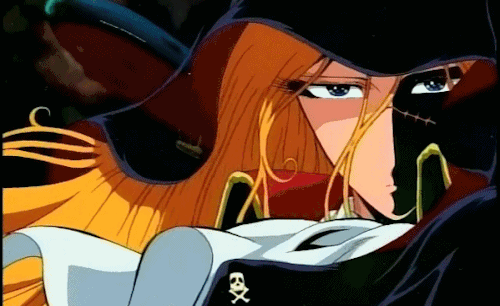
Tonight, then! We’ll be looking at the early parts of Leiji Matsumoto’s long career, in anticipation of visiting his later works down the line. That means starting with The Cockpit to see where Matsumoto himself started, then heading into Arcadia of My Youth to see the origins of Harlock. Which means yeah, we’re gonna be looking at a lot of Nazis and their planes tonight; if that’s a no-go I totally understand.
Animation Night 146 will be going live in about 10 minutes at 8pm UK time at twitch.tv/canmom - hope to see you there!
And rest in peace, Leiji Matsumoto.
14 notes
·
View notes
Text
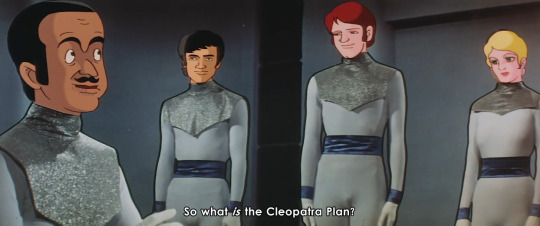
Upon finishing Cleopatra: Queen of Sex, I am left with one simple, rather frustrating question to have at the end of any movie: What was the point?
I can’t help but compare it to Belladonna of Sadness, the film following this one in the Animerama trilogy, and lament Cleopatra’s apparent lack of purpose or narrative vision. Because while Belladonna of Sadness is quite a troubling movie to me personally – I simply cannot call it feminist, and I find it harder and harder to not just admit it is really, very misogynistic despite Eichii Yamamoto’s attempts to grapple with feminist ideas therein – I cannot say it wasn’t trying to impart a meaning, or even that it didn’t succeed in doing so. It was very squarely, definitely, about something. I came away from Belladonna of Sadness shocked, sad, and sympathetic – even if that sympathy was and is still conflicted.
On the other hand, Cleopatra: Queen of Sex left me puzzled and somewhat disgusted, and I don’t even think it was on purpose. And yes, I’m a 28 year-old harpy woman feminist whatever, of course I took umbrage with a 70s cinemax porno anime movie, what did I expect? But that really didn’t even turn out to be my main complaint. In fact, that didn’t even make it into the Top 3 problems I have with this movie, which are as follows:
3. Cleopatra, kind of like Jeanne now that I think about, didn’t actually have much agency and just sort of reacted to the story unfolding around her, despite being the main character. This is exacerbated by having her actions be controlled by another, much more wicked older woman throughout who is doing all of the planning for her.
2. The time-travel framing narrative was completely nonsensical, unnecessary, and went ignored for the vast majority of the movie.
and 1. The ending of the framing time-travel narrative is in complete opposition with the preceding 1 hour and 40 minutes of the story.
Now, I said that the time-travel framing narrative went ignored in the majority of the movie, but that isn’t technically true. If you must know, the time-travellers passively sitting inside of the brains of the ancient people – and a leopard – did contribute One thing to the story throughout: raunchy, absurdist humour. The man inside of Cleopatra’s pet leopard seemingly kept his consciousness somehow, since he was a perverse dunce that facilitated bestiality jokes, just as he did before he got stuck inside the body of an ancient leopard. What a blessing. Thank you Tezuka, for showing me various images of a wacky cartoon leopard trying to have sex with human women.
The other time-travellers ended up in the bodies of humans, a roman slave and a young woman who was a close friend of Cleopatra’s. They, for some unexplained reason, were not consciously controlling the bodies they are inside of, nor were they able to investigate anything despite that being the main conceit of this journey. The roman slave is able to craft explosives and, ridiculously, a handgun, but he has no idea how he knows how to do these things or why he is compelled to. He says vaguely, “someone in my heart is telling me how to do this” and “I made this on impulse, I have no idea how it works”. The young woman does not feel any similar impulse or have access to hidden future knowledge – she may as well have never been possessed at all. Her life goes on exactly as we would assume it would had she not been.
All of the things these three characters do, whether they had been possessed by time-travellers who do nothing anyway or not, could have simply not been done at all and nothing in the story would be very different. History would have played out the same way regardless if the roman slave won his coliseum battle by shooting his opponent with a handgun, and other similar absurdities. Cleopatra steals that handgun afterwards and threatens to kill Calpurnia with it for stealing away Caesar, but Calpurnia convinces her otherwise by showing her that Caesar doesn’t love her, so Cleopatra doesn’t even end up using the gun to change the outcome of history. And need I even explain how whether or not the leopard wants to hump various women doesn’t matter at all, beyond facilitating crude humour, the same way the imagery of a roman slave holding a glock facilitates absurdist humour in this movie?
And it was still not necessary to include them even for the sake of just facilitating humour. There are tons of elements in this movie that are purposely “out of time and place” for the sake of absurdity. All the montages of fine art parodies from around the world, the scene of the various famous statues that have Caesar’s likeness forced onto them after he becomes emperor, Caesar’s assassination playing out like a Japanese stage play. Caesar literally returns to Rome with Cleopatra in a red sports car. This movie never claimed to be aiming for any sort of historical accuracy – we even got a disclaimer about that right off the hop! – we didn’t need any reason for the roman slave to be able to craft a gun, or for the leopard to be horned out of his mind, or the girl to do… nothing…
Functionally the only thing the time-travel framing narrative did was render this movie meaningless in the end. The reason the time-travellers went to the past was to figure out why an alien race on an alien planet called Pasateli, which Earth is trying to conquer, have named their plans for rebellion against Earth “The Cleopatra Plan”. They watch the real Cleopatra’s life unfold in ancient Egypt, and return to the future saying that they now understand what the “The Cleopatra Plan” might be.
The aliens of Pasateli have been sending beautiful women to Earth to seduce the earth men and then, when they are vulnerable, kill them. Upon discovering this, earth launches missiles to Pasateli to destroy it, and the movie ends.

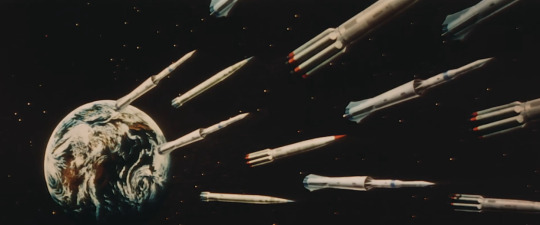
But Cleopatra was not a conniving, wicked woman trying to destroy mankind – this movie does not present her as such. She was being guided and pressured by Apollodoria, and even so, she resisted her demands and fell in love with both of the Roman leaders she had been tasked with assassinating. For an hour and 40 minutes we watch this story about this poor woman who cannot bear to kill the men she loves, not even for her beloved Egypt. Even when Caesar betrays her love, she does not plot revenge or kill him where he lay – she runs away in sorrow. And after Antony dies in his battle against Octavian, helped by Apollodoria’s meddling and poisoning, Cleopatra tries to run away and live in solitude, saying she wants to go back to the way she was before and live a normal life. But Octavian chases her down, helped by the vengeful Apollodoria, and Cleopatra dies when her desperate final attempt to assimilate with the Romans for the sake of survival fails against Octavian, who is immune to her charms because he is gay. (And by the way, in this mess of a story, what is that supposed to mean?)
Similarly, the Egyptians of the movie were clear victims, analogous with the aliens of Pasateli whom Earth was trying to conquer. After Cleopatra committed suicide, faced with being captured and executed by Octavian and having no choice but to do so, the young Egyptian woman one of the time-travellers ended up inside of screamed and cried and begged for the Romans to leave Egypt. That is how the story that takes place in ancient Egypt ends, with an Egyptian woman begging for the conquerors to leave them alone. And then we hard cut to the future and the time-travellers just glibly say, Oh, the Pasateli are trying to destroy us by seducing our men, just like Cleopatra did! Even though in this story, she didn’t.
It is awful. It is insanely misogynistic. It is weirdly conspiratorially racist and brings to mind the bogus “great replacement” theory that neo-nazis insist is definitely real and happening (it isn’t). It makes no sense.

I could try to spin it differently, and try to make a bold claim that this movie is actually about how humans never learn anything from history. How else can you justify none of the time-travellers, particularly the woman who had resided inside of the mourning Egyptian, not pausing and asking: Wait, are we the baddies? Are we the Roman conquerors that drove the titular Cleopatra to desperate measures and an early demise? Are we the villains incapable of witnessing and understanding the violence we are perpetuating even when it is staring us directly in the face?
But that’s a hard sell and one I cannot actually endorse, because this movie did nothing to earn that interpretation beyond have bafflingly bad writing that forces you try to make sense of it. And because there is a comedy scene wherein Egyptian women band together and plot to exhaust the Roman soldiers in Antony’s army with sex prior to his battle with Octavian’s army, ensuring he loses. And it works.
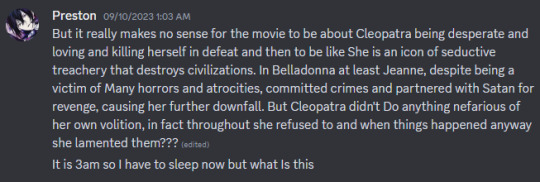
So was this time-travel framing narrative worth witnessing for the sake of laughing at the horrendously rotoscoped anime heads atop live-action actors in a kitschy sci-fi lab? Not in my opinion, no, even though I do love to see animators experiment and I do love feeling like I’m going insane sometimes. And while I can appreciate the artistry of this movie – and there is a lot of it to enjoy! – I have a big problem when a story like this is so contradictory. And no, it being an experimental adult movie from the 70’s doesn’t absolve it of having bad, confusing writing and being dissatisfying.
4/10 for some compelling visuals and a lot of experimental animation that kept things fresh, but it was majorly dragged down by a story that was a little too careless to just be dumb entertainment.
#:Cleopatra#cleopatra 1970#cleopatra: queen of sex#Octavian did slay the entire house down every time he was on screen but alas. He could not save this movie#readmore because I ended up typing 1673 words about this -_-
2 notes
·
View notes
Note
Have you ever seen the belladonna or sadness? What are your thoughts on it if you have?
Thanks for asking! It's one of my all-time favs. The best of Mushi Pro's Animerama series by a long shot (sorry, Tezuka-sensei). I remember importing the R2 DVD almost a decade ago after seeing a bad quality rip with laughably terrible subs. It was a dream come true when it was released on Blu-ray and I got to see it in a local theater. I even read the novel that inspired it, Satanism and Witchcraft by Jules Michelet, which I highly recommend (beyond the persecution of women and girls specifically, it's a fascinating account of the lives of medieval serfs and how conditions could become bad enough that peasants would embrace both decadent sabbaths and witch burnings).
It's dated in parts and isn't ashamed of its more trashy exploitation film elements. Yet the story and themes are surprisingly nuanced and the art direction so beautiful and elegant, it creates this subtle balance. And it manages to make a surprisingly feminist statement, even by today's standards. My favorite scenes are Jeanne's awakening into beauty after her communion with Satan, the accounts of the sabbath by the peasants when being interrogated by the Lord, and the tense buildup to the deadly tryst between the Lady and the Squire.
196 notes
·
View notes
Text
Cleopatra (1970)
The second Animerama film by Tezuka, while it is certainly an improvement to a thousand and one nights it does have similar problems with it's predecessor. Three people from the future are sent back to the era of Cesar. Each of them are sent into the bodies of Cleopatra's companions to fully experience Cleopatra's life.
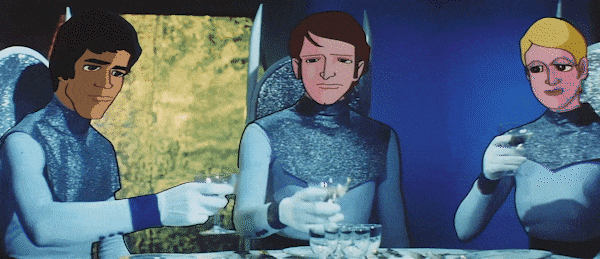
Like a thousand and one nights it is a fun watch from a visual standpoint. It experiments with it's art style and colours that looks good for the most part and when it doesn't (like the real people with rotoscoped heads) I can still appreciate it for trying something new. It plays with references quite a bit of anime such as gegege no kitaro, Astro boy and some others I didn't recognise, the astro boy one in particular it caught me so off guard by how out of nowhere it was.
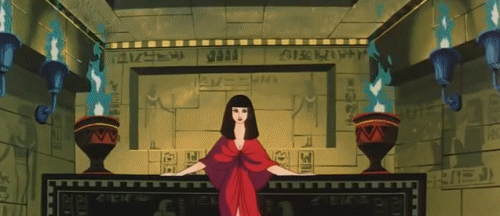
The plot itself is not as scattershot as the last one. It manages to keep it's focus on Cleopatra 90% of the time which is leagues better than a thousand and one nights. While it is bizarre enough to keep my attention it still shouldn't be 2 hours long. Like the other Animerama films this is targeted towards adults and was even called cleopatra Queen of sex in America. I don't think that that title was needed since there's just nudity, a sex scene and a couple of jokes about a leopard wanting to bang cleopatra instead of just hard-core porn that the title made me think it would be.

Check this out if you're interested. If you don't want to see a weird movie when nice visuals I'd go for something else.
The list
#animated movies#animation#every animated movie#animation history#movies#film#old movies#1970s movies#1970s#1970#anime movie#anime#japanese animation#osamu tezuka#animerama
5 notes
·
View notes
Photo


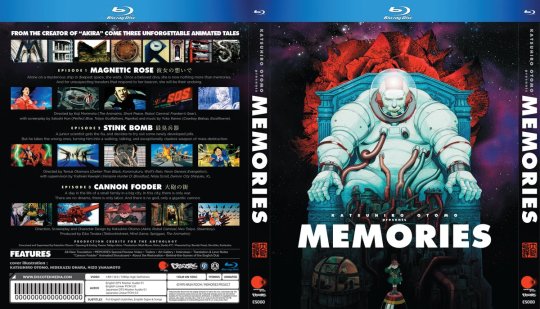

News - Discotek Media announced some big new things during their streaming panel at virtual anime convention Anime Lockdown! Some of the highlights include Combattler V coming to SD-BD, Tezukapro’s infamous 1001 Nights (meaning that along with their upcoming release of Cleopatra and Cinalicious Pics’ release of Belladonna of Sadness, soon all 3 Animerama films will be available in English!). But the BIGGEST announcements would have to be a bluray release of Katsuhiro Otomo’s landmark anthology film Memories, as well as the rest of the original Urusei Yatsura movies!!
You can read a brief rundown of all their announcements from the panel here. I’ll post more updates as they’re made!
#news#Discotek media#memories#Urusei Yatsura#Katsuhiro Otomo#Osamu Tezuka#1001 nights#60s anime#80s anime#90s anime#anime on bluray#combattler v
70 notes
·
View notes
Text
Anime in America Podcast: Full Episode 4 Transcript

Hi, you may have noticed that this week's Anime in America podcast is all about the 18+ topic of Hentai. *Takes a long drag of a Virginia Slim*. Well, buckle up, because this is the full transcript!
The Anime in America series is available on crunchyroll.com, animeinamerica.com, and wherever you listen to podcasts.

EPISODE 4: YES I DO, HENTAI TOO
Guest: Jacob Grady
Disclaimer: The following program contains graphic material and language not suitable for audience members under the age of 18. Discretion is advised.
[Lofi music]
Just like with most things in anime in america, hentai got its start with Osamu Tezuka. In the twilight of Mushi Production’s years, having already sold the anime that would be localized as Astro Boy and Kimba the White Lion to NBC, Mushi produced a series of three animated films called “Animerama,” A Thousand and One Nights, Cleopatra, and Belladonna of Sadness which were commercial failures that likely contributed to the studio shuttering its doors in 1973. All the same, they were revolutionary for their time as “adult” animation, riding on the heels of Japan’s wave of live action “pink” sexploitatoin films gaining popularity during the same period.
While there are surviving animated hentai from as early as 1932 such as “Suzumifune” the content was illegal in Japan during that period. Imagine their surprise, seeing Japan now. The Animerama films were legally produced for theatrical release and popular consumption containing nudity, erotic themes, and even rape during a period where anime was in its infancy, with Mushi and Toei competing to produce almost exclusively child appropriate programming.
I’m Yedoye Travis, and this is hentai in America.
[Lofi music]
So, back to America. Animerama’s second film Cleopatra was licensed by the American Studio Xanadu and released for limited theatrical screenings. While the movie itself contains erotic themes and a LOT of topless women, Xanadu promoted the film as “porno,” localizing the title as Cleopatra: Queen of Sex. Very creative. It hit theaters April 24th 1972, missing the being “The first X rated animated film to be released in America” by just six days to the American film Fritz the Cat… or that would be the case if Xanadu had actually submitted their film to the MCAA for an official rating. They’d self-assigned the film an X rating, which I don’t think is allowed. I don’t think that’s… I don’t think that’s legal. But they did it to push the pornogapraphy angle.
This ended up backfiring as many customers demanded their money back when they realized they were watching a serious film. An actual movie.
Speaking of which, this seems like a good opportunity to talk a little bit about umm… why? Why hentai? Why- why is it a thing? Anime originally crossed the Pacific out of a need for cheap animation to fill air time on America’s growing menu of TV channels. The demand for porn will always exist but, if you’ll excuse the turn of phrase, we didn’t exactly have any holes that needed filling. Especially after America’s sexual revolution, our proud nation has become one of the biggest porn producers in the world. Unsurprisingly...
Grady: For me, Western pornography it’s like, almost like corney, in a way. What I don’t like about Western pornography is it’s very rarely a realistic scenario. You know, it’s always like “pizza delivery guy comes over and you know ‘Oh! It’s my dick in the box!’” or something like that, and then- as opposed to like a relationship developing and some sort of scenario happening based on that. So the appeal of hentai for me is that I get to invest myself in the story and take part in the story and feel for the characters more than I would in a Western pornography. And it’s very rare for any Western adult material to take that route, where they’re actually creating a plot or a story, and I wish more did because I think that that would be very appealing to a lot of people.
That was Jacob Grady. He’ll become important later.
To add to his, um, his point. Just as anime has found a popular appeal for its unique aesthetic and storytelling, the case is also true for the um… for the not safe for work stuff. Where the U.S. has more of a clear cut separation between what is porngrpahic and what is not, Japan is more of a sliding scale. What would normally be considered pornographic material to an American audience can exist within the context of a greater narrative. I’ll give you an example. So Yasuomi Umetsu’s Kite and Mezzo Forte [trailer for Mezzo Forte plays] were both originally released in the U.S. as grim, high production OVAs [Original Video Animations] featuring battles between assassins, an evil drug ring, and a protagonist overcoming intense childhood trauma. And they all became cult classics in the anime community. [trailer ends]
Later on, both got new Director’s Cut releases that included sex scenes you might find under the “hardcore” tab on certain websites that SHALL NOT be named. PornHub. They were hentai the whole time, but made a name for themselves purely on the production and the story. Whi[laughing]- Which is crazy. Imagine that in American… uh, well, anything. The safe for work cut of Kite is on Crunchyroll right now, actually. So you can check it out and tell me it’s not incredible. And this is just the stuff that involves actual sex. There’s a whole genre of “ecchi” and “eros” content that has sexual themes without including actual sex or even nudity. So while Kite may be an outlier based on the raw quality of its production alongside the, umm, intensity of its adult content, it is not exactly an outlier for the amount of story surrounding the sex. Many hentai have very involved plots spanning from comedy to tragedy, featuring scenarios and characters much more sophisticated than a pizza delivery or a plumbing problem.
When people are telling you they watch hentai for the plot, they… might not be lying. As much as it pains me to say. They might be- I mean they still could be, I don’t know. But the plot definitely exists.
It’s also a much more respected art form in Japan, even outside of contextless black and white photography. Studio SHAFT, one of the most respected and stylistic studios with one of the most ridiculous names in this context, built their reputation entirely on their immediately recognizable visual style. This was an intentional move by founder Hiroshi Wakao who built the studio’s trademark on the work of director Akiyuki Shinbo, who SHAFT hired almost directly out of making hentai under the pseudonym Jyuhachi Minamizawa. SHAFT has Shinbo’s touch all of its work to make sure they keep with his avante garde style. Shinbo himself was also the impetus behind the creation of Puella Magi Madoka Magica.
[Clip from a Puella Magi Madoka Magica commercial plays]
Many hentai have found considerable acclaim for their artist’s merit alone or as genre pieces within the genres of romance, science fiction, and even horror. And we will be touching on a few titles as we go.
[Lofi music]
It wouldn’t be for another 14 years that the first real hentai would make its way to American shores in 1986. Although hentai manga had already been around for a while at this point, no American publishers had bitten quite yet. Localization was still the realm of major studios and broadcast networks, although the proliferation of VHS would allow smaller companies to get into the game with direct video release. The first American license of a manga, First Comic’s release of Lone Wolf and Cub wouldn’t be ‘til the next year.
Instead, the first hentai release in America would be a direct-to-video VHS release of the second ever erotic OVA made in Japan, Cream Lemon. Why the second? I dunno. The first was called Lolita Anime and I’ll leave it at that. Excalibur Films dubbed and localized 3 episodes of the 16-part miniseries and released them into the area behind that black curtain that says “18+” in comic shops and video stores across America under the bizarrely chosen title “The Brothers Grime,” hopefully not to be confused with the children’s anime “Grimm’s Fairy Tale Classics” that came out the next year. The literal next year.
In 1990 the first hentai comic would make its way to comic store shelves in the extremely questionable publication “Anime Shower Special” which was basically a magazine that cut shower scenes out of hundreds of different manga that I am pretty sure it did not have the license or permission to use. It’s Canadian publisher, IANVS, would later become part of Protoculture Inc., which produced one of the earliest anime magazines, Protoculture Addicts. Protoculture would then be acquired by Anime News Network in 2005 so I guess you could say they technically got into hentai. Technically.
And that’s not me shaming them or anything like that, just about every company in anime has touched hentai at some point. Central Park Media had Anime 18, Manga 18, and Be Beautiful Manga labels to print hentai anime, manga, and yaoi manga respectively. Media Blasters got their start with hentai, their first title being Rei-Lan: Orchid Emblem and later created Kitty Media to manage their 18+ products. Then there was ADV’s SoftCel Pictures and RightStuf’s hentai label Critical Mass which is just a visual that… that the imagination takes care of, I’d say.
Legitimate companies dealing in hentai was a big risk, both when it came to American promiscuity laws and the popular misconception that all anime is cartoon pornography. So, there’s that. America’s uh, kinda fucked up. Here’s an example: In 1999, Jesus Castillo, a clerk at Keith's Comics in Dallas, was accused of promoting obscenity for selling an issue of the Demon Beast Invasion manga to an undercover officer. He was fined $4,000 and sentenced to a year of unsupervised probation after the original six-month prison sentence was suspended, which is insane. First of all, the heft of that sentence; but second of all, the levity we have with what we perceive as sexual crimes. It’s a very confusing balance of things. But, you know, it’s 1999 I guess.
So why risk their reputation? I mean, the obvious answer why everyone risks their reputation in America: uh, because it’s profitable. Kitty Media’s president John Sirabella claimed that, by 1998, 30-40% of anime’s total revenue in the U.S. came from hentai. 40%! And it was cheap. It was, it was super cheap. You know, you don’t exactly market pornography with billboards or commercials or expensive activations. So they were spending almost nothing on advertising, but hentai VHS and DVD were among their first products to sell out on the dealers floor at anime conventions every time.
So moving on, in 1993 hentai finally made history in the U.S. Central Park Media’s Anime 18 division [Legend of the Overfiend trailer begins] dubbed and released the now infamous Urotsukidoji: Legend of the Overfiend in limited theaters on March 11th, [Tailer ends] making it the first animated film to receive the MPAA’s NC-17 rating which had just replaced their old X rating three years earlier in 1990. The film would reach a legendary cult status among porn, science fiction, and horror fans alike. It was also umm, a lot of Americans’ first introduction to umm… [whispered] tentacles. You know- you know tentacles. You’re familiar. The squid? [Whispering ends]
Okay.
[Lofi music]
This is unfortunately the part where we talk about tentacles...
To understand tentacles I gotta tell you a little bit about um, about censorship law. This is a, yeah, this is a legal matter. I don’t know what else to tell you, I don’t know how else to prepare you for this. It’s a, it’s a legal matter, so bear with me. I will start by saying tentacles have a long history in Japanese pornography. You may be familiar with the famous “The Dream of the Fisherman's Wife” woodblock print featuring a lady and an octopus doing the thing. It was created around 1814 by none other than legendary Japanese artist Hokusai… you know, the guy who drew that wave that you see everywhere, on all the Uniqlo tee shirts? You know the one. Hokusai’s Wave. If you Google those words, you’ll find it. Anyway, they were far from mainstream but let’s just say they existed in the popular subconscious.
So, when it comes to porn, Japan had and has some pretty specific guidelines requiring what is off-limits. They put a lot less emphasis on scenario and the content of scenes, and instead they focus on the appearance of genitalia. I’m sure you’re familiar, you know they got the whole pixelated mosaic over the, over the junk and the jingles and the jangles, and pretty much anything else goes. This is in stark contrast to America where seeing those parts is basically the point of adult material, but scenario and content of scenes can sometimes get you in trouble. The one where we run into problems most is portrayal of minors. Obviously. That’s uh, obviously it’s fucked up. Japan, on the other hand, has the same age of consent as us but umm… [sigh], man, oo boy, they do not follow that in hentai. I will say no more than that. This has of course led to a very unique relationship between hentai publishers and their American licensors. Some weird conversations, it gets weird.
Often American versions of hentai are LESS censored than those in Japan, with the American distributor receiving the cut before the mosaics are added so you see the original art in all its glory. But then they might have to go in and uh, change some other things, like umm… you know, age. Obviously. A character’s age in anime can be kinda ambiguous sometimes, so they usually get away with changing a reference to class to a reference to like a “college” course, but you know, sometimes scenes would have to be cut out if it didn’t convincingly look like two adults. Which it unfortunately does. Frequently.
Okay, so back to tentacles. The whole censorship thing is a problem in the hentai industry that many young innovators have tried to work around, often using objects reminiscent of uh… of- of the pe- the penis as substitutes. Along came an enterprising creator named Toshio Maeda. His solution to the uh, to the censorship problem was of course, as we have set up for the past couple paragraphs: tentacles. They were alive, they moved around, but they were not dicks. It feels weird to talk about porn this much and not say the word “dick.” I don’t- why am I using so many euphemisms? I’m just gonna say dick, wherever it feels appropriate.
I’m gonna paraphrase from an interview with Maeda in 2002. [Music play throughout] Quote: “At that time pre-Urotsukidoji, it was illegal to create a sensual scene in bed. I thought I should do something to avoid drawing such a sensual scene. So, I just created a creature. His tentacle is not a penis as a pretext. I could say, as an excuse, ‘this is not a penis; this is just a part of the creature.’ You know, the creatures, they don’t have a gender. A creature is a creature. So it is not obscene – not illegal.”
Umm… some points were made. The gender thing I feel like is probably… actually, y’know, y’know, that probably, that probably lines up, actually. Depends on how sentient you believe animals are. I guess PETA would disagree. There is- they have a sex, not necessarily a gender, I guess. Huh. Well, look at me learning.
[Lofi music]
Okay, as far as I can tell, the first manga to actually get an official license and distribution in the U.S. was, much like Overfiend, a hell of an introduction. Prepare yourselves as I speak this next sentence. Bondage Fairies was released by Antarctic Press under their Venus Press imprint in 1994, following the adventures of Pfil and Pamela, a lesbian fairy couple who act as sort of, uh forest police making sure animals don’t… break the forest law? Where Urotsukidoji introduced many Americans to a multitude of new uses for tentacles, Bondage Fairies was a first introduction for many as well, and I hate having to say these two words next to each other, insect beastiality. Also obviously bondage. I don’t know if that was clear in the title.
The ‘90s also saw the first eroge making their way to the U.S., a very popular genre of video games in Japan featuring sexually explicit images, often featuring “visual novel” style gameplay where you navigate through different dialogue choices to reach a number of different branching narrative paths, often to pursue a uh, “happy ending” with one of a number of different female characters, usually with a larger overall narrative. If this is news to you, then you might be surprised to learn you’re already a fan of some of them. Eroge are a pretty common source material for mainstream anime actually, usually with the sexually explicit content removed, obviously. Popular examples are YU-NO, Doukyuusei, Rumbling Hearts, and ummm, yes, the entire Fate franchise. Although that shouldn’t have been hard to guess after the uh, mana transfer scene...
Anyway, the hentai industry was going pretty strong in the ‘90s although that fact was not, it was, you know- it was kept under wraps. A lot of legitimate anime publishers had their hentai labels happily printing, but didn’t exactly want to brag about what proportion of their profits came from porn. Nothing good can last forever, though, because in the mid 2000s when the bubble burst, anime companies started going bankrupt and their hentai licenses along with them.
SoftCel Pictures, which was spun off from ADV, then closed down in 2005 with many of their titles being acquired by RightStuf’s Critical Mass. Central Park Media followed in 2009, many of its licenses getting split between Critical Mass and Kitty Media. The manga side was even worse. Most hentai publishers were about as small an operation as you can imagine. One example, Icarus Publishing, was responsible for the longest running manga anthology in the U.S., called AG. And he did that all by himself. When he fell ill in 2010 he just couldn’t keep it going anymore and he closed down.
The field was narrowing, which was really bad for anyone looking to support the industry because piracy is a lot worse in hentai and all other varieties of porn, because it’s hard to get popular advocacy or any sort of regulatory agency on your side when you’re working with stuff that people pretend doesn’t exist. You know, like what do you look like in a courtroom, just arguing for porn? You know? In the ‘90’s, of course. We’re… [exasperated] moderately more sex-positive these days. I guess.
[Lofi music]
Now all this was until one man changed everything...
Grady: My name is Jacob. I created Fakku while I was in college, it was originally like a fan website, sort of like [how] Crunchyroll originated. And from that we were able to build an audience and prove that there was a market for this type of content outside of Japan. Because before we started doing it officially, there’d been only a few poor attempts to publish hentai legally outside of Japan. I know of all of them, but almost no one does. Because you know, they, that’s how under the radar it was. So with Fakku, we were able to show our partners in Japan and the publishers and the artists most importantly, “hey, you know there’s people willing to support the stuff you’re creating. Manga, anime, comics, games now, we have, but you’re ignoring the market outside of Japan.” And you may have seen scenarios where like a Japanese publisher might block all foreign IP addresses from viewing their website, because they’re like “oh, foreigners are pirates! They’re scum of the Earth, they’re awful.” That was, that was something that we had to deal with early on, to convince these publishers “hey, no. It’s because you forced the market to this- we just want to read your comics, we just want to watch your anime. We just want to fap to this and fap to that; but because you weren’t providing it, you know, people had to find it any way they could. And if you were to provide a means for them to support officially, we think that people would be willing to do that.” So that’s the argument that we made to the publishers when we first signed our first partners, and it’s been going great ever since [Laughs].
The same year Crunchyroll made the switch to a legitimate anime streaming service, Jacob started up his pirate hentai streaming site Fakku, just one of many pirate pages of the era. He’d spend his days going to school and working at a grocery store stocking vegetables thinking about what he’d like the site to look like, and he would spend long nights coding. Just coding. Think about how much coding that goes into all the porn you watch these days. The site kept growing and traffic increased until Jacob started using his student loans to pay for their server cost. It actually got so bad he almost had to shut the site down, but when he relayed this to his followers the community stepped up and donated until he was able to keep the operation running.
Using Crunchyroll as a model, Jacob made early attempts to go legitimate. After building up a large user base, he started reaching out to the license holders of his sites’ content to see if he could buy legitimate rights, but they never replied. Eventually he would leave college to start working at Bioware and step away from Fakku, handing the operations down to his team. It’s hard to say where his relationship with the site may have gone from there, but everything changed when Jacob received a cease and desist letter from the oldest hentai publisher in Japan, Wanimagazine.
Grady: So originally they reached out to us. So when I first went to Japan and started talking to publishers, you know obviously we were completely upfront with the history of Fakku, what we were doing, and where we came from. And they were all on board with it, which was cool. Because at first, you know the first meeting I had I think we, I was invited out there by this big Japanese publisher, and I was just like “man, are they just going to like, arrest me?” But you know, I went out there and I explained my thoughts and they were like “okay, let’s do it.” And I’m like “umm, really?” And they’re like “yeah, let’s do it.” And they signed us our first licenses, and one of the first things I said was “okay, but you gotta understand. America like, we don’t do that censorship stuff, so like all those black bars and mosaics and giant glowing penises and stuff that they have in Japan, like we’ve gotta get rid of that. Is that possible? Can you get us uncensored stuff?” And they’re like “yeah. We can get you uncensored stuff.” And I was like “REALLY?!” And they’re like “yeah.” And it turns out that with the censorship, it’s actually all produced completely uncensored originally, and the publishers will then go and add varying levels of censorship, those black bars, those mosaics, depending on the medium that the comic or anime is being distributed from, because there’s different laws in Japan. So if it’s sold online it will have some level of censorship, if it’s sold in paper it’ll have a different level, and then if it’s sold internationally it’ll have no censorship at all. So they were on board with no censorship, and I was like “okay, awesome,” but like I hate DRM, right? Like I want to be able to download the comics, read them on my iPad, read them on my phone, read them on whatever, I was like “can we get a deal with no DRM requirements at all?” And they were like “okay,” and I was like “what the fuck? Really?!”
Interviewer: Damn!
Grady: Yeah, so like I ended up leaving Japan with honestly the best publishing deal probably any company has ever gotten.”
After they had seen the size of the Fakku community, Wanimagazine surprised Jacob with how receptive they were to the idea of working with him, even allowing a slow transition from pirate site to legitimacy rather than cutting out all his pirated content immediately. In 2014, Jacob made the announcement Fakku was going legit.
Grady: They were totally on board with it, obviously. Because it was like the both of best worlds. When we started removing fan content there were people who were upset, because, you know, it’s hard to convince someone to pay for something that they’ve never paid for before. Like hentai? Like, no one had ever been saying “that thing you’ve been fapping to, those thousands of things you downloaded on to your computer, those are actually like worth money. Like that’s, like some artist created that and he’s like trying to get by in Japan, he’s trying to make a living, he’s trying to survive, and like that thing is his livelihood. So you should pay for that.” So that was an early difficulty for us, to convince people to pay for this stuff.
It was a predictably rocky transition, but Jacob was right on the mark. Once fans knew they had a way to officially source hentai, they were willing to pay up to support the creators… and that was what Jacob really wanted.
Grady: I think that one of the most powerful things about Fakku is our brand. Like I’ve always tried to position it as not a porn company, which sounds weird, but it’s always been important to me to not you know be running a porn company for a few reasons, but like really we wanted to create a brand that was more of a lifestyle brand, where it’s like people want to support you know whatever Fakku’s doing, and right now it happens to be a lot of hentai manga. But you know we also recently as of just a year ago started publishing our first games. And then we got into anime. And then we’re getting into original Western comics. So we’re publishing a few artists from outside of Japan, and having them create original chapters for Fakku, and adult chapters. And then we’re bringing those to Japan and saying “hey, we work with this artist. They want to have their book published in Japan, is that something we can do?” So we’re like almost reverse publishing, you know Western artists in Japan, which is cool. So we’re doing a lot of crazy things.
Jacob did something no one in the industry had done before, pulling hentai out of the dark shadows to build a real community. Fakku isn’t the 18+ print of an official brand, Fakku is the brand. Jacob didn’t treat being a fan of hentai as anything to be ashamed of, but something to celebrate as a community, and the fandom responded. There is a fandom. Need I remind you, there is a fandom. For hentai. And all things anime. Fakku has active social media, hosts convention panels with special guests, industry parties with DJs like Anamanaguchi, art shows, and even custom skateboards. Fakku’s kinda a lifestyle brand that, it turns out, many people are proud to represent… even if it’s in the form of a- of an ahegao t-shirt.
He also never stopped branching out. Since going official, Jacob set up a streaming agreement with Kitty Media, the lone survivor of hentai publishers after the bubble burst and the final resting place of many licenses acquired from its fallen brethren. He also worked to acquire licenses to older visual novel ero games and Fakku even published the first ero guro manga in the west… and that, if you don’t know is like umm… it’s like a portmanteau of erotic and grotesque and umm… my description of the matter ends there. You got Google for that.
Jacob even launched a sub-label for non-pornographic manga called Denpa Books, which I guess is a huge departure from every other company that’s ever done this, and he used that to print niche licenses like the acclaimed Kaiji and ero adjacent works such as Inside Mari, Super Dimensional Love Gun, and even Maeda’s Legend of the Overfiend manga.
Since going legit, Fakku has become massive.
Grady: Like we’ve published ourselves over 1,000 manga artists. We now work with I think seven or eight hentai manga publishers in Japan. Pretty much everyone, we work with in some manner.
So despite all my hesitance to engage in uh, in hentai consumption in general, and across the board, I will say that there is a legitimate audience for it, and you know, whatever is your thing is your thing. And if that’s your thing, there’s a place to consume it, and there’s a rich history behind it. Surprisingly. It’s not just tentacles for tentacles’ sake. It’s a thing that makes sense, unfortunately. You almost wish it didn’t. But it does. It does.
So with that, in conclusion, I leave you… with this: just you know, just like the things you like, and umm maybe, I dunno, for whatever reason do some research and look into why you like those things and why they exist.
This has been Anime in America. I’m your host, Yedoye Travis. Tune into the next one.
Goodbye!
[Lofi music]
Thank you for listening to Anime in America presented by Crunchyroll. If you enjoyed this, please go to Crunchyroll.com/animeinamerica to watch literally NONE of the things we just mentioned!
Special thanks to Jacob Grady from Fakku for joining us. And you’ve heard it before, but please leave us a review and rate the show so more people can discover it, or just share it with a friend.
This episode is hosted by me, Yedoye Travis and you can find me on Instagram at ProfessorDoye, or Twitter @YedoyeOT. Researched and written by Peter Fobian, edited by Chris Lightbody, and produced by me, Braith Miller, Peter Fobian, and Jesse Gouldsbury. Additional research and writing by Mamoudou N’Diaye.

0 notes
Text
Anime 001 - Weathering with You
Weathering with You (Makoto Shinkai, 2019)
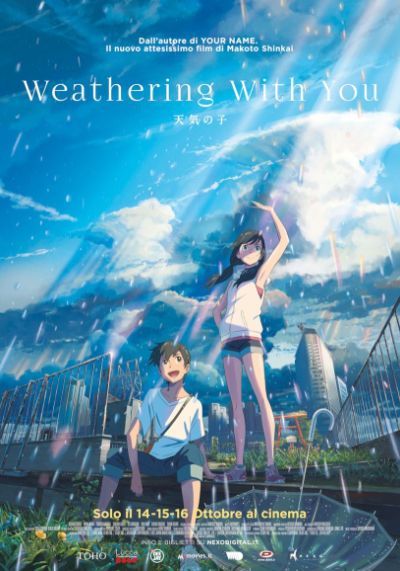
In una Tokyo lunare e opprimente, il giovane Hokada trova prima conforto in un gattino, poi la cena per mano della caritatevole Hina, e infine un tetto e un lavoro per opera del signor Suga, malinconico editore di una "rivista esoterica per ragazzi", che lo promuove al doppio ruolo di colf-redattore. In città, intanto, piove a dirotto.
Ultimo attesissimo film licenziato da Makoto Shinkai, considerato il nuovo genio dell’animazione da molti degli orfani di Miyazaki (che, tra l’altro, è ancora vivo). Eredità pesante, che lo stesso Makoto considera un macigno, come si può evincere da una recente e pensosa intervista in cui si interroga sulla difficile convivenza di arte e spettacolo, poetica e botteghino, per un pubblico indifferentemente giovane o maturo, insomma il genio innato e forse irripetibile del vecchio Hyao. Il buon successo di "Your Name." Sembrava già averlo instradato ma se “5 cm al secondo”, uscito posteriormente in Italia ma che lo precede cronologicamente, aveva già rilevato le, vivaddio, differenze col Genio, il nostro film le problematizza ancor di più, col risultato di una storia qua e là ammiccante, di sfondo furbetto, spesso risolta in afasia, quella di Hokoda che urla senza sapersi spiegare, fugge e spintona, nega, arrossendo e urlando, di non stare guardando le tette della signorina Natsumi, e infine spara pure due colpi di pistola.
Ma valutare un film e un regista in contrapposizione a un altro (regista) è un’operazione deprecabile, che nega i talenti e le visioni di un artista in possesso degli uni e delle altre. "Weathering with You" è un opera orizzontale, dispiegata nell’anime e in una light-novel già in circolazione, mentre la versione a fumetti pare sia già prevista nel futuro prossimo. Esattamente come "Your Name." e "5 cm al secondo", che hanno già esperito le tre diverse forme di comunicazione. Al di là della facile ironia sullo sfruttamento di un quasi-franchise, possiamo congetturare che Makoto, sempre soggettista e autore delle sue sceneggiature, riesce a trovare la piena espressione attraverso la polisemia, di cui sarebbe utile un’analisi comparata, di cui non possiamo dar conto.
Quel che sappiamo è la promozione dei Radwimps, celebre band J-Pop che ha scritto anche la colonna sonora di "Your Name.", e della coppia Masayoshi Tanaka (character disegner) - Hiroshi Takiguchi, responsabile dei fondali di una Tokyo che molto spesso assomiglia a una trappola per topi. Come sempre, Makoto ha tenuto per sé il ruolo di color designer, attività che nel nostro film lo ha impegnato a fondo e da cui esce ampiamente promosso.
La selezione e la gradazione dei colori sono le parti decisamente meglio riuscite della storia, al punto da poterne essere il soggetto.
La metropoli, troppo verticale per degli adolescenti in fase di sviluppo, è concepita essenzialmente dal basso, sia che si ascenda fino al cielo sia che si resti lì, a volte stesi sul selciato col sangue che sgorga sulla fronte; è il basso delle loro altezze che conferma il mondo abietto degli adulti, vicoli-ripostiglio-immondezzaio alle spalle delle fastose insegne luminose dell’ingresso, sulle vie principali, e che sono in realtà un McDonald e un bordello. Nella semioscurità di una suggestiva metonimia, che accomuna sesso, cibo-spazzatura e pistole, l’architettura si fa opprimente e il chiaroscuro angosciante. Ma il vero colpo di genio è consistito nel rendere Tokyo il pentolone delle fattucchiere, agitato dalle "sacerdotesse del bel tempo" che, previa preghiera sincretica cristiano-shintoista, a mani giunte ma rivolta a una ringhiera di metallo, riportano il sole e scacciano la pioggia.
Hina è una di loro, ma il prezzo da pagare è detto altissimo, una regressione alla forma anfibia fino alla scomparsa definitiva.
E proprio qui, lungo tutto il film, che Makoto ha deciso di promuovere il color design a vero e proprio montaggio, che nella sua stretta necessarietà formale si riduce a semplici stacchi e a una notevole dissolvenza in nero che sospende l’avvenimento più cruciale in cui tutto può succedere, anche la fine del mondo. Il montaggio del film, insomma, è tutto interno, con la gradazione di colori nella stessa inquadratura, con la metamorfosi delle forme che regrediscono a forme più elementari (Hina) o trascendono in spiriti vaganti (la pioggia), tutto sotto i nostri occhi, come per rinforzare il concetto di un vero e proprio miracolo. Le declinazioni del blu e del grigio si contano a decine, quasi a scavalcare la scala-Pantone, e la visione macroscopica e panfocus del cinema trova qui tutta la ragione del suo (ancor) essere.
A un occidentale viene facile paragonarle alle Ninfee di Monet, quelle in cui l’effetto liquido-solido cooccorre e prolifera, come il corpo stigmatizzato di Hina.
Le gocce d’acqua, nel loro movimento innaturale di ascesa, sono simili a spermatozoi, dispensatori di vita, e somigliano anche alla membrana protettiva di Ponyo, il pesciolino che diventerà bambina. I cumulo-nembi, per contro, trovano corrispondenza alle corazzate-castelli che solcano i cieli di Laputa e Howl. E siamo tornati a Miyazaki.
Il character design non aggiunge molto a ciò che avevamo già ammirato in "Your Name.". L’estetica Shojo, priva di connotazione sessuale, ripropone nel nostro film "un ideale femminile a cavallo di un adulto a metà e un piccolo adulto in fase embrionale" (cfr Maria Roberta Novielli, "Animerama"). L’ammiccamento alla prosperosa Natsumi è solo una piccola concessione, il pivot del film è la fisicità snella e asessuata di Hina, cui Tanaka ha aggiunto alcune spigolosità del mento e delle impercettibili zone d’ombra sulle guance che denotano la maturità di un volto che non sempre ha sorriso ed è stato spensierato come l’età suggerirebbe. Hina, si scoprirà poi, è molto più giovane di quanto affermi.
È su questo equivoco minore, che avrebbe frenato l’amore di un adolescente per una ragazza più matura, che si gioca anche, ancora ammiccata, la lotta tra il sentimento personale (ninjo) e il dovere sociale (giri), il dilemma che attanaglia Hokoda quando deve scegliere tra l’amore e il Diluvio Universale.
Dopotutto, il tempo è il concetto guida del polimorfo universo di Makoto Shinkai.
Che sia il tempo che scorre, avversario storico delle sue storie, fin dall’inizio, o che si tratti del tempo meteorologico, i suoi eroi se lo ritrovano sempre d’intralcio, Ottuso Opponente. È un concetto che la sociologia nipponica ha battezzato Sekaikei, letteralmente "tipi di mondo", in cui è sempre questione di una storia d’amore, rigorosamente eterosessuale, in cui la ragazza è di norma materna e protettiva, sullo sfondo di uno scenario apocalittico sul quale molto possono i nostri eroi solitari, senza storia, famiglia, o istituzioni che si occupino di loro; una serie di assenze che sono esse stesse concausa del disastro imminente.
E questa è esattamente la strada di Makoto Shinkai, fin dai suoi esordi, fin da quel capolavoro ancora ineguagliato che è "La voce delle stelle".
0 notes
Text
Introduction to Japanese Anime
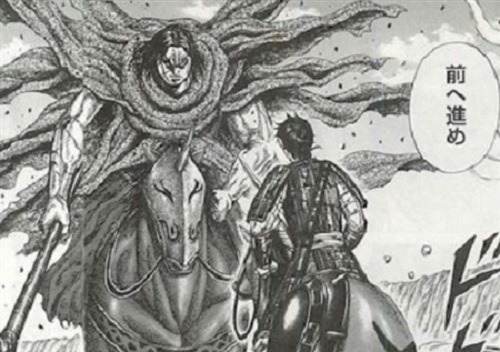
The heritage of anime is notably wide, indeed, and it will consider hundreds of web pages if I will make a chapter about it. I could, but it will acquire a 12 months or a lot more for me to compile it. My key concentrate is not to existing a chronological dissertation of anime heritage in its broadened feeling, considering the fact that it is, as I explained, wide. But it is part of my result in to present to you, the visitors, a simplified presentation of the anime background. So in this post, my lead to is to give a simplified but awakening check out for us Christians about anime and its history. Knowing the historical past, of training course, will not make us ignorant of modern sophistication. Additionally, as Christians, it is significant for us to know or to trace back the roots right before we jump into temptations of any type.
To commence with, the word "anime" is mainly dependent on the initial Japanese pronunciation of the American word "animation." It is the model of animation in Japan. The Urban dictionary defines it stereotypically as: the anime type is characters with proportionally huge eyes and hair types and colours that are pretty vibrant and unique. The plots vary from incredibly immature (kiddy things), via teenage level, to experienced (violence, content material, and thick plot). It is also vital to note that American cartoons and Japanese animes are unique. The storyline of an anime is additional advanced when that of a cartoon is more simple. While cartoons are supposed for little ones, anime, on the other hand, is additional meant for the adult viewers.
Whilst the creation of anime was generally due to the impact of the Western international locations that started at the start off of twentieth century (when Japanese filmmakers experimented with the animation procedures that were getting explored in the West) it was also encouraged by the manufacturing of manga (comic) that was already existing in Japan even prior to the creation of anime.
Around the beginning of the thirteenth century, there were by now images of the afterlife and animals appearing on temple walls in Japan (most of them are equivalent to modern manga). If you beloved this short article and you would like to receive additional information concerning キングダムネタバレ!最終回の予想や物語の結末まとめ kindly visit our own web page.
At the commence of 1600's, pics were being not drawn on temples any lengthier but on wood blocks, recognized as Edo. Subjects in Edo arts were being less religious and have been normally geographically erotic. Noting this, without having a question, it gave me this insight:
"The specific shows of manga, that would afterwards influence the industry of anime, ended up by now existent in the thirteenth century. That is hundreds of years just before anime emerged into perspective!"
Now it should not be too astonishing, appropriate? There are several mangas (also acknowledged as comics) of these days that are as well vulgar and explicit and if not, there will be at minimum one character in her showy overall look. I'm not stating that all mangas are whole of nudities, if that's what you happen to be wondering by now. But somewhat, this exploitation of eroticism (or at the very least a trace of amorousness) on mangas is not really new. They already existed even before the World War I and II. They, on the other hand, sophisticated into some thing else. Manga, to a good extent, is a component as to how and why anime existed. In truth, most animes and are living steps are diversifications of mangas or comics.
Japanese cartoonists currently experimented with various fashion of animation as early as 1914, but the wonderful advancement of anime however started soon soon after the Second Globe War where by Kitayama Seitaro, Oten Shimokawa, and Osamu Tezuka ended up pioneering as then notable Japanese animators. Amid the pioneering animators during that time, it was Osamu Tezuka who attained the most credits and was later identified as "the god of comics."
Osamu Tezuka was very best recognised in his do the job "Astro Boy (Tetsuwan Atomu)" the first robotic boy with an atomic coronary heart who had wished to be a actual boy. His functions ended up noteworthy and his design and style of animation contributed a great deal in the production of Japanese anime, these types of as massive and rounded eyes. Tezuka's functions did not only emphasis to entertain youthful viewers but he also conceived and initiated the creation of Animerama. It is a collection of thematically-relevant grownup anime characteristic movies made at his Mushi Production studio from the late 1960's to early 1970's. Animerama is a trilogy consisting of a few films: A Thousand & A person Nights, Cleopatra, and Belladona. The first, A Thousand & One Evenings, was the very first erotic animated film conceived by Osamu Tezuka, the god of comics.
Whilst anime built its way, it was only in the 1980's that anime was totally recognized in the mainstream of Japan. Due to the fact then, a lot more and extra genres emerged into remaining. From slice of lifestyle, drama, mechas, tragic, adventure, science fiction, romance, ecchi, shounen-ai, shoujo and a ton much more of genres. Whilst most of the anime reveals shifted from much more superhero-oriented, fantastical plots to fairly more reasonable room operas with ever more sophisticated plots and fuzzier definitions of appropriate and incorrect-in brief, anime in its broadened sense is just complicated.
Furthermore, afterwards all through the boomed expertise of Japanese animation, a new medium was then designed for anime: the OVA (Unique Video Animation). These OVAs were being immediate-to-house-video collection or films that catered to a lot smaller audiences. The OVA was also dependable for allowing for the initial total-blown anime pornography.
As Japanese animation even more received extra viewers and acceptance during the planet, a subculture in Japan, who afterwards identified as themselves "otaku", began to establish all around animation journals these types of as Animage or later NewType. These publications grew to become known in reply to the too much to handle fandom that produced all-around reveals such as Yamato and Gundam in the late 1970's and early 1980's and during this period the mecha genres had been distinguished.
It all begun from historical paintings, wooden block arts, creative depiction of lifestyle, mother nature, and animals as early as the thirteenth century. Until these, nonetheless, evolved into relocating frames when distinct experimentations of mangas and animation were being made in the pre and post-wars era.
Even as early as 13th century, mangas on wood blocks, acknowledged as Edo, were previously existent not only for the sake of art but it was there I believe as a medium of entertainment... a kind of art and leisure that would gradually advanced in time.
In conclusion, the background of anime was broad in its sense and this write-up has not presented all of it. But the position is, we must know that anime by itself carries a whole lot of genres and motives that can be alarming more than we can imagine.
0 notes
Text
Top Physical Anime Releases of 2016

I wish I could spend this entire month making "Best of the Year" lists for 2016, but unfortunately, it would be disingenuous to do so. Most of the media I consumed this year was either older or just not strong enough for me to promote. However, there is a year-end list that is entirely made up of content not released in 2016 I consumed that I can put out: A List of my "Ten Favorite Anime Home Video Releases". That’s an overly specific title, but pedantry is something that comes with the territory. I am by no means an expert in the field of disk encoding nor would I say I’m well versed in all the goings on with the way anime is distributed, this is just a list containing the anime I was happy to see got a release or a re-release this year with a few honorable mentions. I’m also limiting this list to North American releases, only because I have even less knowledge of other regions' anime markets. Since this post is rather long, I’ve provided a list of the anime I’m going to cover here making it easier for you to search for a particular title.
Table of Contents
Shirobako (Honorable Mention)
Maria the Virgin Witch (Honorable Mention)
Otaku no Video
Belladonna of Sadness
Gundam Thunderbolt
The Girl Who Leapt Through Time
Dai-Guard
The Vision of Escaflowne
Dennou Coil
Only Yesterday
Getter Robo Armageddon
Sword of the Stranger
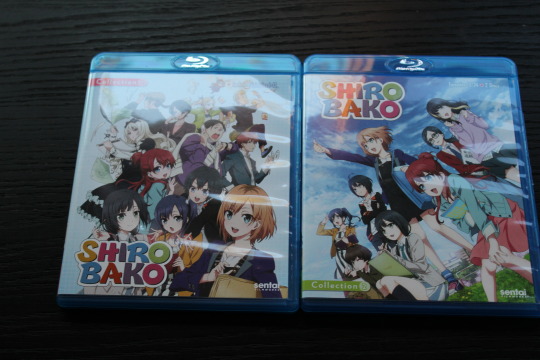
Shirobako: As impressive as this show is I wouldn't call the anemic release it got this year a must buy. A shame as the release and popularity of Shirobako in the West has aided in the significant change happening to the western anime fandom in recent years. The show opened a lot of eyes to the struggles inherent in creating anime, leading to a greater appreciation of the medium as a whole. I've seen it spur on people already present in a community branch out and diversify the type of content and critique that gets produced about the medium. These claims may be a bit unsubstantiated, but I’ve known a lot of people who after watching and enjoying Shirobako got a fire lit under them to really dive in and give back to the community/industry more than they had before. The knowledgeable and passionate members of our community are creating more content than ever that help breaks down the barriers between consumers and creators that appeared to exist for decades. Slowly we’re coming together to support these fans turned scholars and the medium of anime more and I can’t wait to see what 2017 brings to the table in this way. Unfortunately, as I mentioned earlier, my hyperbolic statements about Shriobako and what it may or may not have done for this community aren't reflected in this two-part Sentai Filmworks release (nor could they ever realistically be). With the show available to stream currently on Crunchyroll as well as Sentai’s oft-forgotten The Anime Network and its license nowhere near close to expiring this is a show you don’t need to run out and buy immediately. Frankly, if you’re still fanatical about the show you probably bought a bunch of character goods or the second pressing of the Japanese Blu-rays. I bought this domestic release an impulse buy because Amazon has decent pre-order discount and I had the leftovers of a birthday gift card. For everyone else who wants to buy I suggest you wait until Sentai inevitably releases a complete series set.

Maria the Virgin Witch: Another impulse buy, this the result of a Rightstuf.com holiday sale daily deal, but one I’m less regretful supporting early. What pushed me over the edge to buy it is because I am almost certain this gem of the Winter 2015 season will continue to be overlooked. It may be in part due to its title or the fact that a lot of anime fans tend to check out during the winter season. Either way, this show about a witch in an alternate history version of a European conflict is far more engaging and endearing than the one that aired in 2016 (though those are the only similarities between Maria and Izetta I swear). I want to talk about this show for the blog this year, so I don’t want to spoil too much. I will say that you can currently stream it through Funimation or Hulu and with Funimation’s partnership with Crunchyroll I’m sure it will enter their catalog as well next year (which would be a good time to release whatever I’ve written about it). Until then this show is destined to reach Funimation’s S.A.V.E. line in the coming years as a lot of good shows, unfortunately, do in this era of overwhelmingly huge anime seasons.

Otaku no Video: Probably the most impressive complete package I bought this year, Animeigo’s remaster of this classic OVA/Live-Action documentary by studio Gainax is pure shelf candy. I had slept on their remastering of Bubblegum Crisis, but I was enthusiastic in backing their second Kickstarter to give this essential commentary on fan culture the high-definition treatment it deserved. This limited edition comes in a solid chipboard box and includes an 180+ artbook on top of the additional audio commentaries, liner notes and three language tracks provided in the standard Blu-ray release. Though OVA itself looks better than it ever has the documentary, being not shot on 35mm film, looks decidedly more dated but less compressed than it did on the older DVD release. Robert Woodhead and everyone involved deserve high praise for the package they put together, and I would suggest any anime collector to grab the standard Blu-ray copy if they are the least bit interested. While I came from the generation of anime fans that grew after this project, I still find the topics it brings up relevant to fan culture today. There are numerous anime now that star “Otaku” now but the reasoning for almost all of those shows to do so is purely self-referential. The main character/characters are “Otaku” because the writer is one, and it gives them carte blanche to so how genre savvy they are to their majority otaku audience. Very few of these shows tackle the issues brought up about fan culture, and instead the "Otaku" character archetype has become so emblematic that it’s almost become a necessary cliche for a lot of writers to fall back on. So when I see shows that set out to address fan culture it makes me elated to watch. Shows like Genshiken, Welcome to the N.H.K. Comic Party and even Lucky Star to an extent come from a more genuine place. Whether this place is a more critical or celebratory doesn’t matter to me as it does to a lot of other fans and Otaku no Video clear cut between the fun-loving OVA and the far more sobering documentary may turn off some viewers. Sure both halves aren’t as seamlessly melded together as in later series but they are two halves of an essential whole, and I urge you to watch both if you haven't to gain the full experience.
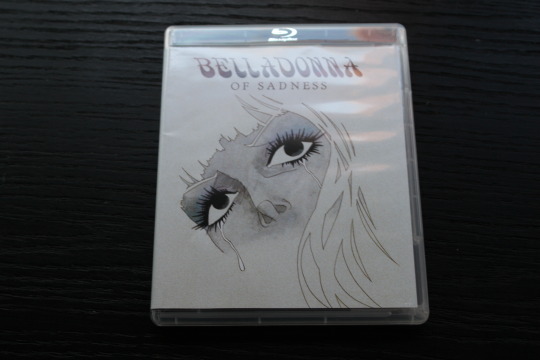
Belladonna of Sadness: I adore this film and relish in its beautiful restoration, but I’m at a loss for words with how to sell it to those not already in the know. Conceptually Belladonna of Sadness your straightforward rape revenge story but its presentation is anything but, not only in the realm of anime but animation as a whole. Belladonna is the final of the three Animerama films made by Osamu Tezuka’s Mushi Productions, a project that aimed to create more adult-oriented animation. It’s by far the shortest of the three films and, from what I believe is due in part to Tezuka’s lack of involvement, by far the most serious. Still, it shares the trilogy's real sense of wanting to experiment with animation on top of showcasing more mature storylines. Belladonna tale is shown through ornate watercolor stills, their elegance worthy of presenting in any art gallery. Despite showcasing limited animation for an animated feature the use of these still images through cinematography manages to make its tale no less poignant. However, in movement Belladonna is a surreal journey unlike anything on celluloid. The closest comparison I have are some of the films of Ralph Bakshi but even the most psychedelic of his sequences appear far more grounded than Belladonna’s phallic parade. The use of color and sound in these moments would be electrifying by themselves, but given the stationary nature of the film these energetic and unearthly sequences stand out even more. Despite all my praise, I understand that not everyone is as willing as I am to watch a 1970s, experimental, anime rape-revenge flick that is made up of mostly watercolor paintings let alone run out to purchase it. Luckily Amazon has it for streaming for Prime members so if you’d like to try it before adding it to your collection or just want to watch something daringly different be my guest.

Gundam Thunderbolt: In a year where Nozomi was putting out a Gundam release every month, fans of the long time mecha franchise, such as myself, were downright spoiled for choice when it came to collecting the series on home video. If I was a more die-hard fan I could have made a list consisting of almost nothing but Gundam titles, but I decided to have one release represent the franchise this year. I could have chosen traditional favorites such as Zeta Gundam, 0080 War in the Pocket or Char’s Counterattack. The oft-maligned ZZ Gundam or underrated series like Victory Gundam and After War Gundam X, surprising newcomers in Gundam Build Fighters and Gundam Build Fighters Try are also appealing buys. The glorious trainwreck known as Reconguista in G was at points calling my name to defend it here and if I really wanted to send I could have even chosen the excellent adaptation of Gundam: The Origin which came in some lavishly designed art boxes. However, if I had purchased all of these this year, even taking advantage of every sale and discount possible, I’d have been downright broke. Besides, I have a much better candidate. Gundam Thunderbolt December Sky, the compilation of the previously released four episodes, is probably the biggest piece of fanservice anime I’ve seen so far this decade. From the action choreography to the mechanical design and fluid animation all nestled in a dour military plot where neither side is the clearly in the right: This is the stuff of Gundam fans' dreams. Thunderbolt demands to be viewed in the highest definition possible, its excellent jazz soundtrack and overall sound design pleading for an appropriate surround system and this minimalistic Blu-ray release doesn't disappoint on that front. Where it does, however, is in the included dub. A dub little to most Gundam fans, especially those willing to import a Blu-ray movie, but after coming off one of the best dubs this decade, Gundam Unicorn, this is a real letdown. I’m sure this will still go over well when this eventually airs on Toonami, but I think this could have been casted a lot better. As of this writing, Gundam Thunderbolt isn’t legally streaming anymore, but hopefully when the planned second season comes out, the original will be made available either through streaming or a domestically released Blu-ray. It may be too much to ask most people to shell out for, but this right here is one of the best looking series this decade. Truly a high point for anime and animation in general. Plus one of the leaflets included in this box announces the Japanese release date for the Mobile Fighter G Gundam Blu-rays, which means they can’t be too far out from releasing domestically. I can’t wait to experience that beautifully godawful dub again, this time in high definition.

The Girl Who Leapt Through Time: Shinkai’s first non-franchise film initially came to the West with far less fanfare as his name carries now. Sure there were fans of Digimon Adventure: Our War Game! And One Piece Film 6: Baron Omatsuri and the Secret Island but the cultural cache behind the director's name hadn’t exploded yet. The Girl Who Leapt Through Time changed that and probably lead to Funimation’s decision to pick up the rights and heavily market his next film Summer Wars, a film which increased his level of notoriety to the point where people began calling him “The Next Miyazaki”. While still beloved post Summer Wars, The Girl Who Leapt Through Time had the unfortunate distinction of being one of the last anime Bandai Visual had licensed before they closed up shop. The film’s popularity combined with the small print run the Blu-ray received lead to massive price gouging on the secondhand market even for the more readily available DVD copy. Having already acquired the rights to Summer Wars, Wolf Children, and the then upcoming The Boy and the Beast it seemed clear to everyone that a Funimation relicense of this film wasn’t far off. In the meantime, many in the collecting community decided to purchase the frankly stunning South Korean Blu-ray set, though others including myself waited for a far cheaper domestic copy. I bought the standard release although Funimation released a limited edition version as well that I hear doesn't compare favorably when up against the previously mentioned South Korean release. Either way, this major film from a now well-established director has finally been made available again so it can reach the wider audience he has now. Funimation’s release comes with a number of extras on the disks the most valuable being the two interviews with Hosoda. The Girl Who Leapt Through Time might not be in my upper echelon of anime films, but it’s certainly one I enjoy on occasion, even with my general lack of interest in time travel and I'm glad to have it back in my collection in an affordable higher fidelity.

Dai-Guard: In this modern era of anime where new giant robot shows, outside Gundam, are infrequent it sure was kind of Discotek Media to redistribute this forgotten title in the genre. Imagine if events similar to those in Neon Genesis Evangelion occurred except that N.E.R.V. was not a ludicrously well-funded organization and instead had a budget similar to many of our real-life underfunded government organizations. Yes, the angel-like, amorphous threat known as the Heterodyne have returned after humanity's destructive confrontation with them twelves years prior but the only weapon capable of defeating them, the robot Dai-Guard, has seen better days. Now used as a mascot for the military Dai-Guard is barely able to make it through a battle without falling apart. This somewhat more comedic take on alien lifeforms set to destroy earth is one of the many things that set Dai-Guard apart from the many anime the share its premise. Unlike a lot of those anime, however, Dai-Guard is piloted by three people and their conflicting personalities and interpersonal stories, along with those of the rest of the 21st Century Defense Security Corporation add a lot of the flavor and weight to the series. The ensemble cast is what makes Dai-Guard more than your average giant robot show and anyone who's been a fan of office comedies, both in and outside anime, in the past decade will find a lot to enjoy here. Dai-Guard itself, while not the most memorable robot in anime history, is well designed and its signature weapons lead to some very well done fights. This show's more light-hearted tone acts as a nice reprieve in between watching more heady programming, for example, I decided to give this show a rewatch after watching Casshern Sins, and it worked wonderfully as a palate cleanser. As always Discotek does an excellent job maintaining the quality of the original release as well as shipping it in solid packaging. The original dub from the ADV release is here and is on par with what they usually produced back in those days. Overall Dai-Guard isn’t the flashiest show, but much like its titular robot it manages to hold itself together to deliver a satisfying punch to fans of a currently underserved genre.
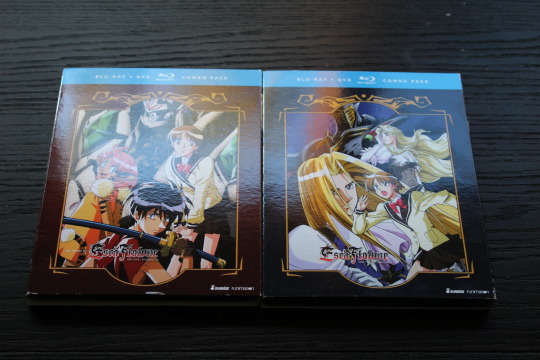
The Vision of Escaflowne: There was and still is a lot of drama in the anime collectors community surrounding the re-release of this well-loved anime from Sunrise. Funimation’s successful Kickstarter to redub the series was already showing warning signs before funding ended and their handling of the aftermath left a lot of people with a bad taste in their mouths. Needless to say, I doubt they’ll consider using crowdfunding again. I was unable to back the project and therefore I wasn’t privy to a lot of the discussion that took place about it. From what I managed to glean, unfortunately, it looks like an actual resolution hasn’t been met which is a shame that will continue cloud this release. Escaflowne was a huge deal in the western anime fandom upon its initial release and while it’s time in the limelight isn’t as constant as its contemporary Cowboy Bebop it is by no means a show that has aged poorly. Sunrise did an excellent job remastering this title in the Japanese release a few years ago, and the show has never looked better. I’m a bit biased toward the style of the show, being a huge fan of Nobuteru Yuki’s character designs since Chrono Cross, and when you add giant robots into the mix, you have a show that hits me right in the sweet spot. Top it all off with one of Yoko Kanno’s most celebrated scores, and you have a series poised to remain a staple in the western anime fandom for decades to come. As far as the new dub is concerned, it is certainly more up to the standards of new anime dubbing than the original, included with Bandai’s release. I never had a fondness for the original, so I can’t say I miss it. Nevertheless, I’ll still be sticking to the original Japanese for this show, unlike so many other Sunrise shows from this period. If this new dub is capable of bringing in more modern fans to enjoy this classic, then I am all for it supplanting the old one. I’m a bit disheartened that due to the new dub Funimation decided to split the series initially like they do with a lot of their newer acquisitions of similar length. They could have charged the combined price and kept everything in one box, but I guess that’ll happen when this show gets reprinted for their Anime Classics line. In the end, I’m for more people viewing this stunning show however possible either through purchasing these physical sets or streaming through Funimation and hopefully Crunchyroll sometime this year. Despite all of the mishegas, I’m glad to add this series again to my collection. However, I decided not to purchase Escaflowne: The Movie. The movie itself is an odd duck, being a pseudo-compilation movie that also alters many characters and events not just for the sake of time. I tend to find a lot of these movies rather substandard, the exception being The Adolescence of Utena which I have grown to enjoy over time and will be pleased to repurchase along with the rest of the series on Blu-ray in 2017. As for Escaflowne: The Movie I may pick it up for the sake of completion but only further down the road when it’s discounted.
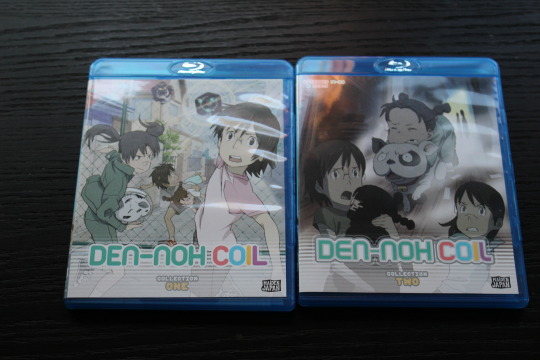
Den-Noh Coil: 2016 was going to be the year that I began importing a lot of anime as domestic licensers were either slow or unable to distribute the shows I wanted. Many these series were made available by Australian publisher Siren Visual, whom I’ve purchased from before to get my copy of Welcome to Irabu’s Office. Luckily Sentai Filmworks stepped in to begin distributing a handful of Siren's catalog in Region A including this one (now if only they or anyone would license Monster or Kaiba). Den-Noh Coil had been a show that struck a chord with me when I found it online in 2008 and was one of the big things I shared with my college anime club when I was asked to run nights. I held out hope that the show would officially available in English, but that wish and the little fanfare the show received subsided as the years continued. It’s a shame the series and its talented creator Mitsuo Iso haven’t become household names, and I’m hoping this late release can help restart the conversation about both. What surprised me most about this release from Sentai Filmwork’s Maiden Japan imprint is that they decided to dub it, and I honestly think it isn’t half bad. I rewatched the first handful of episodes dubbed and while North America’s limited anime VA talent limits it (as it does almost every modern dub) I’d hazard to say it tops Maria the Virgin Witch’s for my personal choice for best dub of the year. Unlike Maria’s I find the dubbing of this show far more important as I genuinely think this is a good show for younger children. The kids in this show look and act like kids and while it gets a bit dark in places there is nothing here that I think would frighten kids more than the cavalcade of horrors I saw growing up watching Don Bluth movies. I also see this show as a good candidate to ease your older friends and family into anime as there isn’t anything here I’d consider objectionable or embarrassing. Besides, a lot of the concepts in this show are moving far closer to the realm of possibility than they were a decade ago. Wearable computers, virtual reality and the omnipresence of technology and how it meshes with where we live are far more relevant topics than they ever were in 2007 due to how tangible all these ideas are to us now especially with kids who grew up only knowing smartphones and tablets. I’m glad I got to revisit this show recently, and I’m hoping more people do in the coming years so I can talk about it with someone. It’s only available to stream through The Anime Network for now but hopefully, some other site (Crunchyroll) will be able acquire it as well.
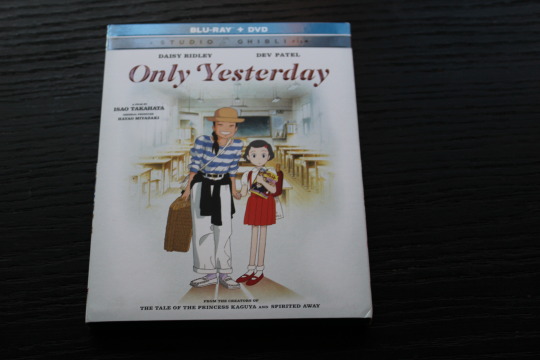
Only Yesterday: It makes sense that this would be the last of the major Studio Ghibli films to see release in North America. A movie about the growing ennui of a late 20-something business woman isn’t something you can easily sell to kids, especially when there isn’t a randomly inserted fantasy sequence such as with the similarly tonal Whisper of the Heart. Still, as I hasten to reach the age of our protagonist Taeko Okajima I’ve only found this film more relatable and it has managed to climb the ranks of my personal “Ghibli Hierarchy”. There was a lot of buzz around this Disney dub starring The Force Awakens' lead Daisy Ridley, but I can’t say I’ve listened to this one yet. I can assure you that the mixed reactions I've heard and read from a lot of people haven't affected my decision to do so. My reasoning for not listening to it is rather simple: I don't want to watch a film grounded in 1980s Japan with English voices. The dub is there for those who want it, and if it manages to get more people to see this movie, then it was worth making. Only Yesterday is a fantastic film worthy of placement in your collection alone, but the over 40-minute making-of documentary included in its extra features make it a must buy for anyone interested in animation production or Studio Ghibli. Not only does this cover a lot of the movie's unique production aspects of the film but the culture of Studio Ghibli at the turn of the decade. Being filmed around Only Yesterday’s 1991 release this is relatively early in the studio’s life, so it’s an excellent snapshot of this period. Being one of Takahata's films we see a great deal of him and his worth ethic both in animation directing and with running the studio, something we, unfortunately, don’t get a lot of due to the cult of personality surrounding Hayao Miyazaki. Of course, Miyazaki is prominently featured here, as well, and this being the early 90s he’s relatively less cynical. Being able to own this documentary that I’ve watched for a number of years is great, and I’m thankful the folks at Disney went out of their way to acquire it again for this release. It's a sizable contribution that makes an already great package truly stellar.
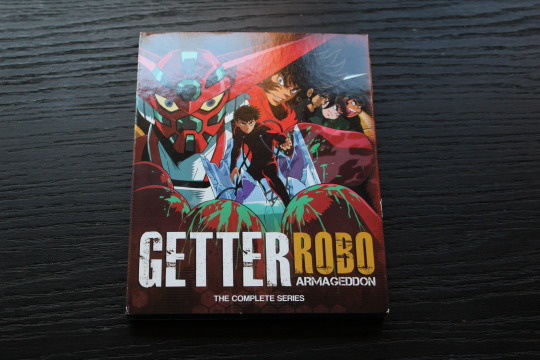
Getter Robo: Armageddon: I tend to have horrible luck when it comes to purchasing old media. Most times I buy something that’s long out of print it gets announced for a re-release within the next few weeks. Getter Robo: Armageddon would surely have been another one of those cases had I not checked Facebook to see Discotek Media’s announcement. I used to show this one as well in my college anime club, and a lot of the folks who were Gurren Lagann fans ate it up. For months I had been waiting for this action-packed OVA to be released in high definition, getting jealous of those who attended summer cons grabbing and early print copies. This gritty, high-octane giant robot show is an enjoyable romp from beginning to end. The remaster not only makes the colors pop, but the improved sound makes all the action scenes for me, that and most of the episodes starting with the second opening HEATS doesn’t hurt either. This entire series scratches that itch for hot-blooded fun and looks marvelous doing it. I’m always happy to support a company like Discotek because time and again they release quality products and Getter Robo: Armageddon is no exception. After the anime crash in the late 2000s, I thought a company like Discotek that only licensed older anime would be a flash in the pan. With every box set and movie, I buy from them I'm reminded how wrong I was in my assumption. Their 2017 lineup is already looking stellar and the fact they announce new licenses almost every other month shows how strong they’ve become.

Sword of the Stranger: You might wonder why I’ve taken a photo of the older Bandai release instead of Funimation’s recent reprinting. This is because despite the Funimation release getting a dub I didn’t feel the need to rebuy something I already owned on Blu-Ray. I’ve heard the dub is fair and the extra features are nice, but neither are spectacular enough for me to double dip so early. Nevertheless, I wanted to bring attention to this great action film’s re-release and if you read until this point in the post you know I’ve already spent my fair share on anime this year so cut me some slack. Sword of the Stranger one of the first names brought up when anime fans want to showcase a great action scene. The choreography the folks at Studio Bones nailed down here is outstanding and worthy of any action showcase. Fans of Fullmetal Alchemist: Brotherhood should be elated in finally getting access to this movie again as that series owes a lot to the style of action created for this film. Not only that but the film as a whole is a solid feature: a simple samurai story told well. There isn’t anything revolutionary going on here plotwise, and the characters are familiar archetypes though not to a fault. It isn’t trying to deconstruct its themes and characters for critique. Rather it comes off as a slick action movie that effortless falls into the greater chanbara canon. I appreciate this film's simplistic approach. It makes for easy sharing with friends and family who don’t usually watch a lot of anime. Sometimes all I want is a good self-contained action movie and Sword of the Stranger delivers and then some even a decade later. My only reservation about picking this one up now is that somehow Funimation failed to include subtitles for the Chinese dialogue, something included in the Bandai release I own. I'm hoping that with the release being so recent and the mistake pointed out that it will be fixed in newer pressings and that those who picked it up early can get exchanges. Maybe 2017 will be the year Funimation also revamps its attitude toward quality assurance? Here's hoping because I'd hate for a great film like this to be dragged down by an easily fixed mistake.
By now I’ve written more than enough about the anime on home video (re)published in 2016. Not only that but some well-beloved classic titles have already been announced for release (again) next year. Featuring plenty of Gundam, Revolutionary Girl Utena Blu-Rays, Urusei Yatsura: Beautiful Dreamer, Captain Harlock: Arcadia of my Youth and if we're lucky more popular Sunrise shows. 2017 looks to be an even better year for those of us who relish in collecting disks and I'll be there, my bank account willing, ready to enjoy it.
See you next week.
#the vision of escaflowne#only yesterday#gundam thunderbolt#the girl who leapt through time#shirobako#maria the virgin witch#den-noh coil#sword of the stranger#da-guard#gundam#getter robo armageddon#getter robo#belladonna of sadness#otaku no video#anime
3 notes
·
View notes
Text
A thousand and one nights (1969)
It's only fitting that the first animated movie for adults came out in 1969. This is the first in a experimental trilogy by Tezuka called Animerama with each being intended for a mature audience. Aldin runs off with a sex worker called Mirium. The chief of police's son; who paid for the Mirium is enraged that Aladdin ran off with her so he sends Badli (wow I wonder if he's the antagonist) to get her back at any cost. Once she is captured Badli manipulates her to stay with her. 8 months later Mirium dies giving birth to Aldin's child; Jaris so Babli adopts her. Meanwhile Aldin comes across the 40 thieves and plans to steal their gold until Ali Baba's daughter Mardia catches him. Once they realise they both have a serious grudge against Badli they begin to work together. After that it just devolves into sexy lady Island time for the next 10 minutes or so. After a timeskip Jaris now a teenager is in love with Aslam, a shepherd instead of a concubine of the sultan like Babli wants her to. Aldin is back in the movie now having changed his name to Sinbad and plans to become the sultan of Baghdad and marry Yaris who he doesn't know is his daughter through a tournament.
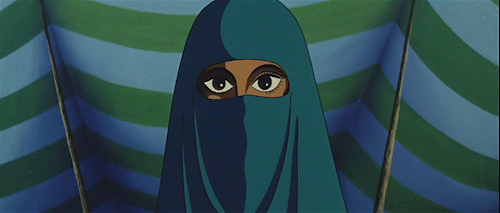
As you can tell the plot is pretty scattershot even though I cut out things that didn't have much bearing on the story like the weird teletubby-like imps that turn into animals, the torture scene in prison and the pirate adventure. There's a decent story that could be salvaged if it was more focused and trimmed all the fat. Mardia is by far the most interesting character but she is barely utilised, what Badly did to her to make her so vengeful is awful (it was r@pe btw, thank god it wasn't explicit) and I feel like she should of had way more agency instead of being on screen, what 15 minutes total?

The art direction while cheap is very appealing. There's a lot of experimentation in this like using live action water and monochromatic palettes in certain scenes. It gets more abstract and artsy during the erotica bits. I appreciate them trying out new ideas but it's charm isn't enough for the 2 hours and 10 minutes of runtime to keep you engaged.
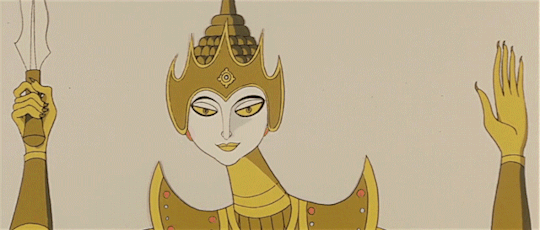
It's nice to see experimentation and a studio trying to break out of the 'animation is only for kids' stigma but it is just too long and all over over the place for me to recommend it. Oldboy (2003) has a few similar plot points and is done really well. If you're looking for psychedelic animation go for the yellow submarine or the adventures of price achmed if you are interested in a 1001 Arabian nights adaptation.
The list
#animated movies#animation#every animated movie#animation history#movies#film#old movies#1960s films#1960#anime movie#anime#japanese animation#1969#a thousand and one nights#1001 arabian nights#osamu tezuka#Animerama#adult animation#mushi production
4 notes
·
View notes
Text
Need Movie Night Ideas? Here Are Some Must-See Anime Movies on VRV!
There’s a lot of anime here on Crunchyroll, but there’s even more out there on VRV! Personally, I find it exciting to log on and look at the seemingly endless options ahead of me for what I can watch next. However, there are probably some out there who might think it a little daunting. Maybe you don’t quite have the time right now to invest in a few seasons of a show. Maybe you’re in the mood for something shorter than that, like a movie, perhaps. If that’s the case, you’re in luck, because VRV has plenty of anime movies out there to choose from! If you’re looking for some quick recommendations, here are some of my favorite must-watch anime films on VRV:
Akira
Do you love intense action, brutal violence, and breathtaking animation? If so, you can’t go wrong with a classic like Akira. This seminal cyberpunk thriller centers around the relationship and rivalry between Kaneda, a hot-headed biker gang leader, and Tetsuo, a frustrated young boy with phenomenal psychic powers. Set against the backdrop of a dystopic post-war Neo-Tokyo, these two duke it out for the fate of the city. Akira not only made its mark on the anime industry in Japan, but also across the entire world. Its stunning visuals and violent narrative stunned audiences around the world and introduced a wealth of new people to the sprawling world of anime. Watch it again (or for the first time!) on VRV today!
Night on the Galactic Railroad
If you’re in the mood for something more quiet and thoughtful, Night on the Galactic Railroad has you covered. Based on an early 20th century novel, this 1985 film focuses on a young cat named Giovanni. Born into a young family with a sick mother and a father on a journey far from home, he finds himself ridiculed and isolated by his peers. However, on the night of his village’s annual star festival, a mysterious train appears, which he boards along with a kind classmate named Campanella. On this train they take a across the universe. This classic film offers meditative ruminations on, life, death, philosophy, and history that have tugged at the heartstrings of audiences for decades since its release.
Mamoru Hosoda’s Catalogue
It’s tough to recommend one without the others, so why not watch all four of Mamoru Hosoda’s movies on VRV? In the Girl Who Leapt Through Time, a high schooler named Makoto manages to cheat death and optimize her life when she suddenly gains the ability to leap back in time, but not without unintended consequences. In Summer Wars, a young programmer unwittingly finds himself fighting against a rogue AI over summer vacation. In Wolf Children, a human named Hana falls in love with a wolf man and struggles to raise their children when he unexpectedly passes on. Finally, in The Boy and the Beast, a homeless kid stumbles into a world populated by beasts and is adopted by an apprehensive bear-man. While these may all be separate films, they’re all tied together by the common theme of family. Whether you’re in the mood for big families, small families, or found families, there are no better films to watch than these!
Mind Game
Wanna watch something just a little more...out there? Well, you can’t go wrong with something from Masaaki Yuasa! The feature film directorial debut of the man who would go on to direct Kaiba and Devilman Crybaby, Mind Game is a wild ride from start to finish. This star-crossed love story focuses on an aspiring manga artist named Nishi and his childhood crush Myon, who is engaged to someone else. One fateful night during a quiet meal, they’re accosted by yakuza and Nishi is killed. Nishi’s sheer will to live convinces God to give him a second chance, which Nishi grabs by the horns and rides like a wild bull. Mind Game is an inventive trip from start to finish seamlessly blending multiple animation styles such as 2D, 3DCG, and still life photography together to create a three-course feast for the eyes!
Belladonna of Sadness
Looking for something like nothing else out there? Belladonna of Sadness might just be the film for you! Based on the 19th century historical collection Satanism and Witchcraft, Belladonna of Sadness follows the story of Jeanne, a peasant woman in medieval France. After being assaulted on her wedding night by the village clerics and spurned by her newlywed husband Jeanne, she makes a deal with the devil to become a witch and take her revenge. This unsung jewel of underground animation was the final entry in the adult-oriented Animerama films conceived by Osamu Tezuka and is one of the last productions by the original Mushi Productions studio he founded. From start to finish, Belladonna of Sadness is a violent and psychedelic piece of adult erotica without compare. Over four decades after its release, it’s finally found its way onto our screens on VRV!
The Kingdom of Dreams and Madness
While it may not technically be an anime film, I would be remiss to not include a fantastic documentary about anime production on this list. The Kingdom of Dreams and Madness is a 2013 documentary following legendary director Hayao Miyazaki throughout the production of the Wind Rises leading up to the sudden announcement of his retirement afterwards. This heartfelt film provides a rare look into the inner workings of one of animation’s most world-renowned studios and the illustrious creators that work there. While the film centers primarily around the daily life of Hayao Miyazaki, viewers will also get to know names such as his frequent producer Toshio Suzuki, close friend and collaborator Hideaki Anno, and also the talented late Isao Takahata. The documentary was put together and released years prior to his recent passing, and both his presence in the film and the way in which his peers regard him gives this documentary an even heavier emotional weight. After watching all of the fantastic anime films listed above, be sure to not only take the time to learn about the way in which anime movies are made, but also honor those who make it.
How’s that? See anything you like on there? Didn’t see a name you were looking for? Fret not, there are plenty more fantastic anime films where these came from out there on VRV. So go ahead, get on there, find your favorites, and find some new favorites while you’re at it. You won’t be disappointed!
Join VRV today!
---
Danni Wilmoth is a Features and Social Videos writer for Crunchyroll and also co-hosts the video game podcast Indiecent. You can find more words from her on Twitter @NanamisEgg.
1 note
·
View note